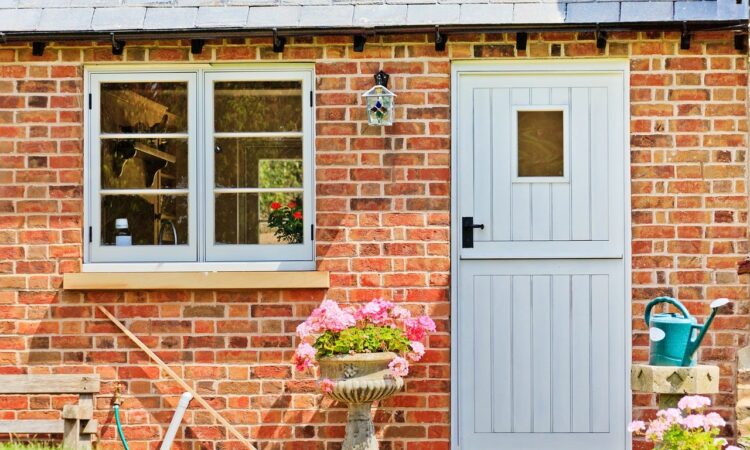
The Bank of England raised interest rates on 3 November from 2.25% to 3.0%. The 0.75 percentage point increase marks the eighth rise since December 2021 when Bank rate stood at just 0.1%. It puts Bank rate at its highest level since November 2008.
Volatility and uncertainty
The cost of mortgages had already been climbing due to sterling volatility and market uncertainty, after September’s ill-fated Mini-Budget, as well as rising Bank rate. Major lenders including NatWest, Barclays, Halifax and Virgin Money all pulled deals and brought them back to the market at higher prices.
The appointment of Rishi Sunak as Prime Minister helped to settle the markets and the average cost of fixed rate mortgages has been continuing to edge down from its peak.
According to data provider Moneyfacts.co.uk, the average cost of two- and five-year fixed rate deals across all deposit levels today edged down to 6.01% and 5.80% respectively. This compares to highs of 6.65% and 6.51% on 20 October.
Five-year fixed rate average costs are now below 6% for the first time in more than eight weeks.
However, the last time mortgage costs were at these levels (outside of recent weeks) was back in 2008 and 2010 respectively.
Rachal Springall at Moneyfacts says mortgage rates could fall further, but that it was difficult to know when and by how much: “Borrowers may feel they have to be patient for a little while longer yet before they commit to a new fixed mortgage, or even wait until next year to see how the market recovers from the recent interest rate uncertainty.”
The average number of available mortgage deals rose today from 3,689 to 3,730. Numbers have continued to climb back up since the fall-out of mini-Budget when they dropped to around 2,560. But today’s figure is still a far cry from the 5,300 recorded by Moneyfacts in December 2021 before interest rates began to climb.
It remains to be seen whether the settling political landscape will continue to restore stability to the markets. If so, this could ease pressure on the Bank of England to raise interest rates.
The next decision to be taken by the Bank’s Monetary Policy Committee (MPC) falls on 15 December.
Interest rates and mortgages
So what do rising interest rates mean for the cost of mortgages so far?
The estimated two million homeowners on variable rate deals, such as base rate trackers, saw an almost immediate rise in their monthly repayments following the latest Bank rate rise to 3.0%. As an example, a tracker rate rising from 3.5% to 4.25% costs around an extra £80 a month on a £200,000 loan.
Someone with a £250,000 mortgage over 25 years at the Moneyfacts average two-year fixed rate of 6.46% would see a rise in monthly payments from £1,520 to £1,643 – that’s up £123 (assuming the full rate increase was passed on).
Remortgagers and first-time buyers will find themselves faced with much higher mortgage costs when they come to source a deal as interest rate rises are largely already factored into the price.
Work out the monthly cost of a mortgage against various interest rates with our Mortgage Calculator.
House prices and Stamp Duty
As well as more expensive mortgages, those looking to buy or move home are grappling with high house prices. According to Nationwide’s House Price Index, published today, the average property in November cost £263,788 – nearly seven times the average full-time UK salary, as measured by the Office for National Statistics.
However, house prices also dropped by 1.4% since October – marking the biggest fall since June 2020, when the country was in the grip of the coronavirus pandemic. And prices were down 4.4% compared to November last year, found Nationwide – a steep decline from the 7.2% recorded in the 12 months to October.
Robert Gardner, the building society’s chief economist, said the figures reflect the fallout from September’s mini-Budget: “While financial market conditions have stabilised, interest rates for new mortgages remain elevated and the market has lost a significant degree of momentum.”
Stamp Duty cuts announced in the mini-Budget raised the nil-rate band on the purchase of a property from £125,000 to £250,000. While u-turns were made on the other tax breaks announced under former Prime Minister Liz Truss, this has remained in place.
Why are interest rates rising?
The Bank’s MPC uses interest hikes as a means of cooling the economy and taming rising inflation. The Consumer Prices Index (CPI) measure of inflation rose to a heady 11.1% in the 12 months to October against a government target of 2%.
And if inflation continues to rise, some forecasters are suggesting that Bank rate could reach 6% by next year.
One of the main longer-term drivers behind rising inflation is the cost of energy. Under regulator Ofgem’s energy price cap, annual bills for a typical-use household would have rocketed to £3,549 from 1 October, and further still to £4,279 from 1 January 2023.
But the government has superseded the price cap with its own ‘cheaper’ Energy Price Guarantee (EPG). This limits typical annual bills to £2,500 until 31 March 2023, followed by £3,000 from 1 April 2023 for a further 12 months.
What mortgage deals are available?
With upwardly-mobile Bank and inflation rates, keeping track of mortgage costs is increasingly challenging – especially when rates change, and deals can be pulled, on a daily basis.
One simple way is use our mortgage tables, powered by online mortgage broker, Trussle.
To find out what deals are available at today’s rates for the kind of mortgage you’re after, you’ll need to enter your personal criteria into the table below. Here’s what to do:
- Select whether the mortgage is to fund a house purchase or if it’s a remortgage for an existing property
- Enter the property value and the mortgage amount you require. This will automatically generate a percentage which is known as your ‘loan to value’. The lower your loan to value, the cheaper the mortgage rates available
- Tick the relevant box if it’s a buy-to-let or interest-only mortgage (you’ll need a repayment strategy in place for these deals), or if you’re looking for a mortgage to fund a shared ownership property
- Finally, filter your search by the type of mortgage you want, for example a two- or five-year fix or tracker. The filter is set to a complete mortgage term of 25 years but you can change this if required.
Here’s a live table of the mortgage deals available today.
What else do I need to know?
Mortgage deals offering the cheapest rates usually come with fees attached. You can opt to pay these upfront or add them to the loan. To factor in the cost of the fee, order your the results by ‘initial period cost’ (in the ‘Sorted by’ dropdown).
Alternatively, you can order results by initial rate, lowest fee or monthly repayment – even by the lender’s ‘follow on’ rate that the deal will revert to at the end of the term.
The very cheapest are reserved for bigger deposit amounts, usually of 60% of the property value or more. And, in all cases, you will need a sufficient income and clean credit history to be accepted for a mortgage.
If you want to see what your monthly mortgage payments might look like in different scenarios while overlaid with household bills, our Mortgage Calculator will crunch the numbers.
When can I start a remortgage?
Once issued, mortgage offers tend to be valid for six months. If you are looking to remortgage your current home, this means you can lock in a rate you see today – at no cost and with no strings attached.





